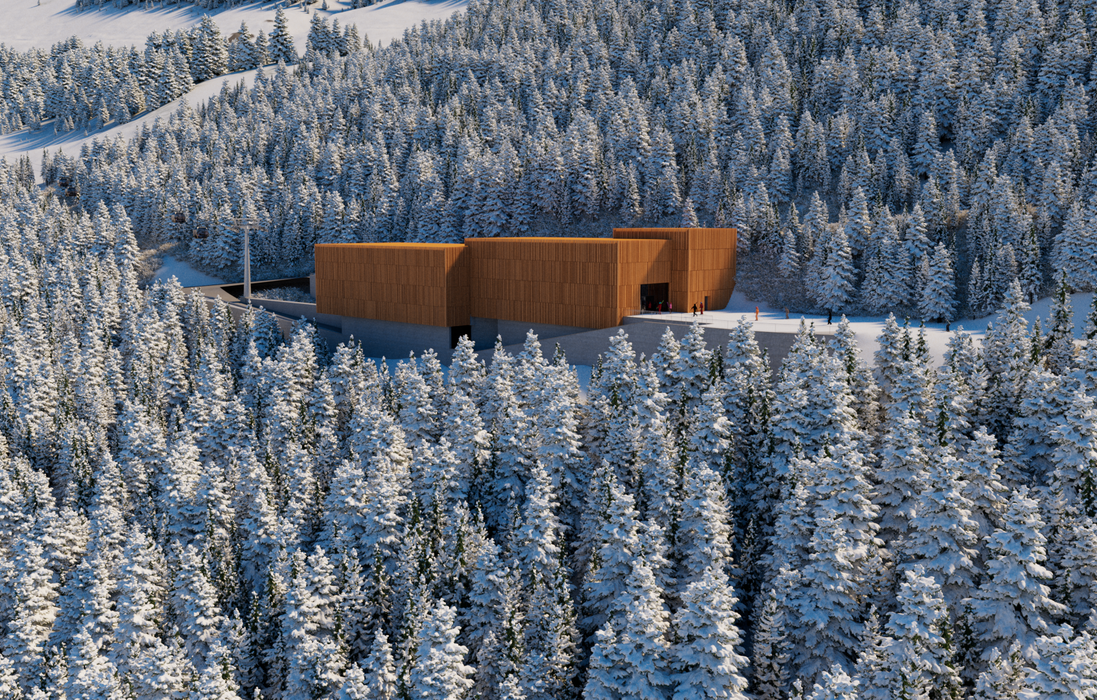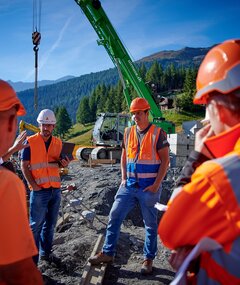

Construction of the Télémixte lift integrates environmental concerns
The Esserts-Savoleyres Télémixte project was launched with a particular focus on its environmental impact. By replacing obsolete installations, this new lift has been designed to improve user experience while minimising its ecological footprint. In close collaboration with local expert partners, the project integrates measures to protect flora, fauna, and the mountain landscape, adopting sustainable and environmentally friendly solutions.
Teaming up with local partners
To accomplish this ambitious project, we have collaborated with several expert partners. The firm Drosera SA has been mandated to draft the environmental impact assessment and outline the associated offsetting measures. Noise pollution concerns have been entrusted to Impact SA, hydrogeological issues are handled by geologist Charly Berthod, and natural hazards due to avalanches are managed by geoformer igp AG.
Environmental issues to consider
The environmental impact assessment covers 11 areas that have been carefully analysed in terms of the Télémixte construction.
Our mission is to develop this installation while fully complying with local planning regulations and environmental, nature and landscape protection legislation. To achieve this, please take a look at the key measures we will be implementing, from the lift’s construction to its operation.
Spotlight on key measures
The building of a new ski lift requires careful consideration when it comes to protecting the natural environment, particularly animal habitats and plant life.
Despite the scale of the site, all measures recommended by the environmental monitoring and impact assessments will be rigorously respected to minimise its impact on the natural environment and local residents.
Discover the measures we will be implementing in order to offset the impact of this project.


Stations in harmony with the landscape
The stations, designed by FIMA Architecture, have been carefully crafted to blend harmoniously into the landscape. The departure station at Les Esserts, in the heart of a forest, is built with wooden materials, melting seamlessly into the surrounding woodland. The middle station at Les Planards takes on a more mineral aesthetic with stone cladding, blending into the Alpine scenery.
Protect flora and fauna
The installation of the new lift will require changes to the landscape. To offset the effects of such changes, specific measures have been planned to:
Limiting the trampling of wetlands
A removable fence will be installed over the summer period to protect the downstream section of the wetlands from being trampled by livestock. This type of ecosystem plays an important role in terms of biodiversity, providing a habitat for specific species of flora and fauna and helping to regulate water levels by absorbing excess water during periods of heavy rainfall.
More water to keep the wetlands wet
Healthy wetlands need a lot of water. We will increase the water supply to the central wetland, which is currently too dry (approx. 75m²).
Creating a pond
We will add a small pond of around 25m² to the wetland. Useful for frogs, insects and birds, it will foster biodiversity.
Reforestation
Areas that have been temporarily cleared will be restored and reclaimed by the woodland and left to recolonise naturally once construction is complete. Once the work has finished, the need for any localised planting will be discussed on site with the forest ranger and the Lower Valais forestry district. For areas where vegetation has been permanently cleared and where operations have damaged the forest, it is proposed, in agreement with the district’s forestry engineer, to make a payment into the reforestation fund to be used for the regional environmental offsetting project.




Reducing noise pollution
A number of measures aiming to reduce noise pollution at the lift’s source have been integrated into the project. First, the specific location of the valley station has been determined to minimise noise pollution.
This station will be housed in a closed building to further reduce noise. The Télémixte lift also benefits from the latest technology, including the use of Performa cables made by Fatzer, whose almost cylindrical surface structure glides with virtually no vibration, reducing noise and creating a quieter environment.
The electric motors installed at Les Planards and Savoleyres stations use the Doppelmayr Direct Drive system. As well as the significant energy savings generated by this type of drive system, the motors’ low rotation speeds greatly reduce noise pollution.
Environmental monitoring
Once construction of the Télémixte lift is complete, we will contact our experts (hydrogeologist, biologist, soil specialist) to monitor the project’s compliance with these measures and to establish a post-construction environmental audit.
By implementing these measures, we are committed to building the Télémixte lift while limiting its impact on the environment. The defined offsetting initiatives will help to protect the natural environment and ensure that the area remains welcoming to flora, fauna and visitors.



